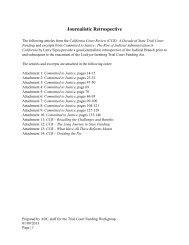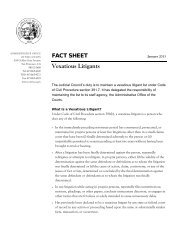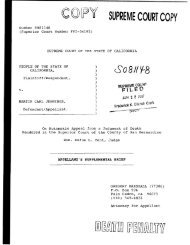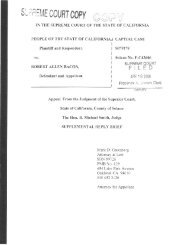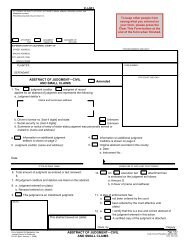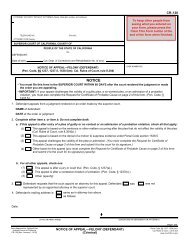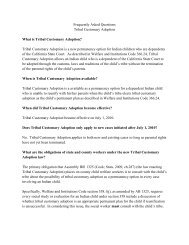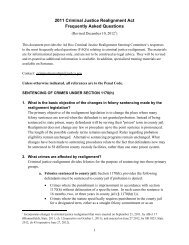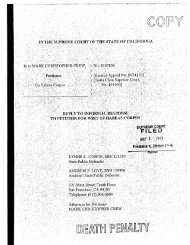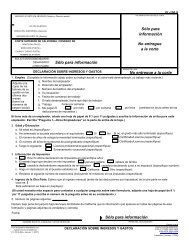Appellant, William Satele, Reply Brief - California Courts - State of ...
Appellant, William Satele, Reply Brief - California Courts - State of ...
Appellant, William Satele, Reply Brief - California Courts - State of ...
Create successful ePaper yourself
Turn your PDF publications into a flip-book with our unique Google optimized e-Paper software.
B. The Court Erred In Refusing The Requested Instruction<br />
Respondent argues that it was not error for the trial court to refuse the<br />
requested instruction because "[a] trial court has no sua sponte duty to give<br />
amplifying or pinpoint instructions." (RT at p. 197.) Respondent is wrong.<br />
It is true that a trial court does not have a sua sponte duty to give pinpoint<br />
instructions. However, that is not the question presented here. Rather, this case<br />
deals with the duty <strong>of</strong>a court to give pinpoint instructions on request. The duty to<br />
give requested instructions is different from the duty to give instructions sua<br />
sponte. As explained in <strong>Appellant</strong>'s Opening <strong>Brief</strong> (AOB at pp. 166-167), a<br />
defendant is entitled to a pinpoint instruction upon request. (See also People v.<br />
Saille (1991) 54 Ca1.3d 1103, 1119; People v. Castillo (1997) 16 Ca1.4th 1009,<br />
1019.) Respondent's failure to address the duty <strong>of</strong> a trial court to give pinpoint<br />
instructions when requested to do so should be regarded as a concession as to that<br />
issue. (People v. Adams, supra, 143 Cal.App.3d 970,992.)<br />
Respondent further contends that the trial court did not err in refusing the<br />
requested instruction because the principle <strong>of</strong> law reflected in the requested<br />
instruction was similar to the language contained in CALJIC No. 3.01 and,<br />
respondent claims, was sufficient to inform the jury <strong>of</strong> the principle contained in<br />
the requested instruction. (RB at pp. 197-198.) However, CALJIC No. 3.01<br />
informed the jury that merely being present at the scene <strong>of</strong> the crime is not<br />
sufficient for aiding and abetting liability. Nothing in the instruction even began<br />
to address the question <strong>of</strong> whether being in the company <strong>of</strong>Nunez and Caballero<br />
might be sufficient for such an inference.<br />
Moreover, because <strong>of</strong> the testimony <strong>of</strong> the gang expert and the nature <strong>of</strong><br />
gang cases, appellant's association with Nunez and Caballero would be an<br />
incriminating fact in itself beyond mere presence. Julie Rodriguez, the<br />
prosecution's gang expert explained that when gang members go on a shooting<br />
mission there are three roles: a driver, a lookout, and a shooter. Combined with<br />
the evidence presented as to how gangs gain status and operate, the jury could<br />
89



